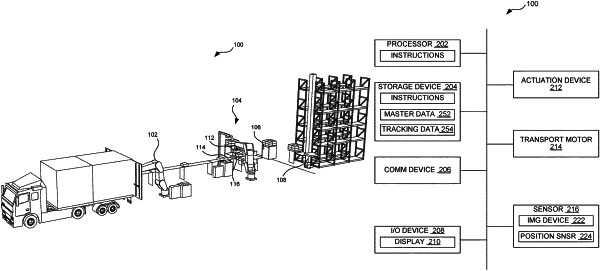| CPC B65G 47/905 (2013.01) [B65B 57/00 (2013.01)] | 20 Claims |

|
1. A method for operating a robotic system, the method comprising:
calculating a processing order for subgroupings that represent groupings of available objects designated for placement at a task location;
based at least in part on the subgroupings and the processing order, generating placement plans for placing the available objects, wherein generating the placement plans includes comparing arrangements of discretized object models for the available objects to a discretized platform model corresponding to the task location, wherein the discretized object models correspond to physical dimensions of the available objects, and wherein the discretized platform model corresponds to physical dimensions of a platform at the task location;
based at least in part on the placement plans, generating a stacking plan for stacking the available objects, wherein the placement plans correspond to layers within the stacking plan; and
implementing the stacking plan for placing the available objects at the task location.
|
|
15. The method of claim 1, wherein:
generating the placement plans and generating the stacking plan include deriving candidate stacking scenarios;
each candidate stacking scenario is recursively or iteratively derived based at least in part on:
generating a lower plan for forming a lower layer,
identifying one or more planar sections of a first candidate plan, wherein each planar section represents adjacent and/or continuous horizontal top surfaces,
generating an upper plan for a layer above the lower layer based at least in part on testing one or more placement locations of remaining subgroupings relative to the one or more planar sections,
calculating a placement score for the candidate stacking scenario based at least in part on a number representing placed objects, and
stopping the iterations or the recursions based at least in part on determining an empty source status, a full layer status, or an unchanged score status; and
generating the stacking plan includes generating the stacking plan based on selecting one of the candidate stacking scenarios according to the placement score.
|